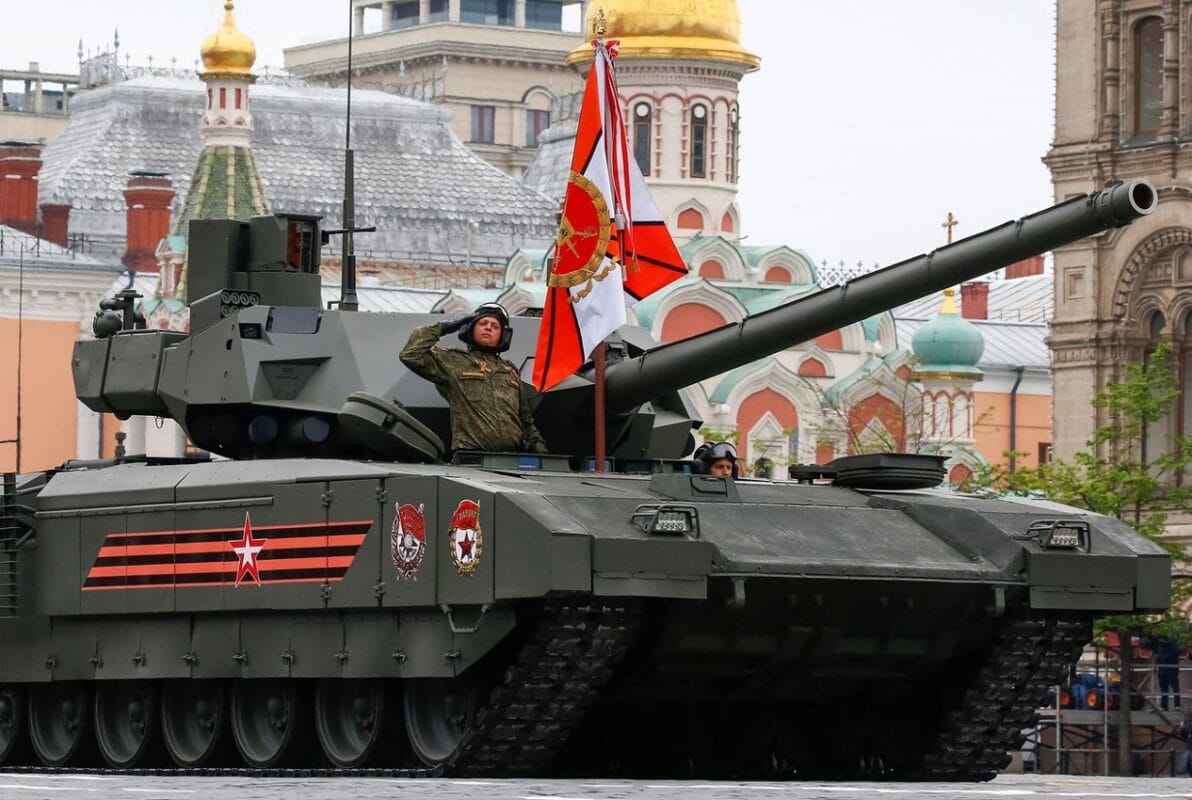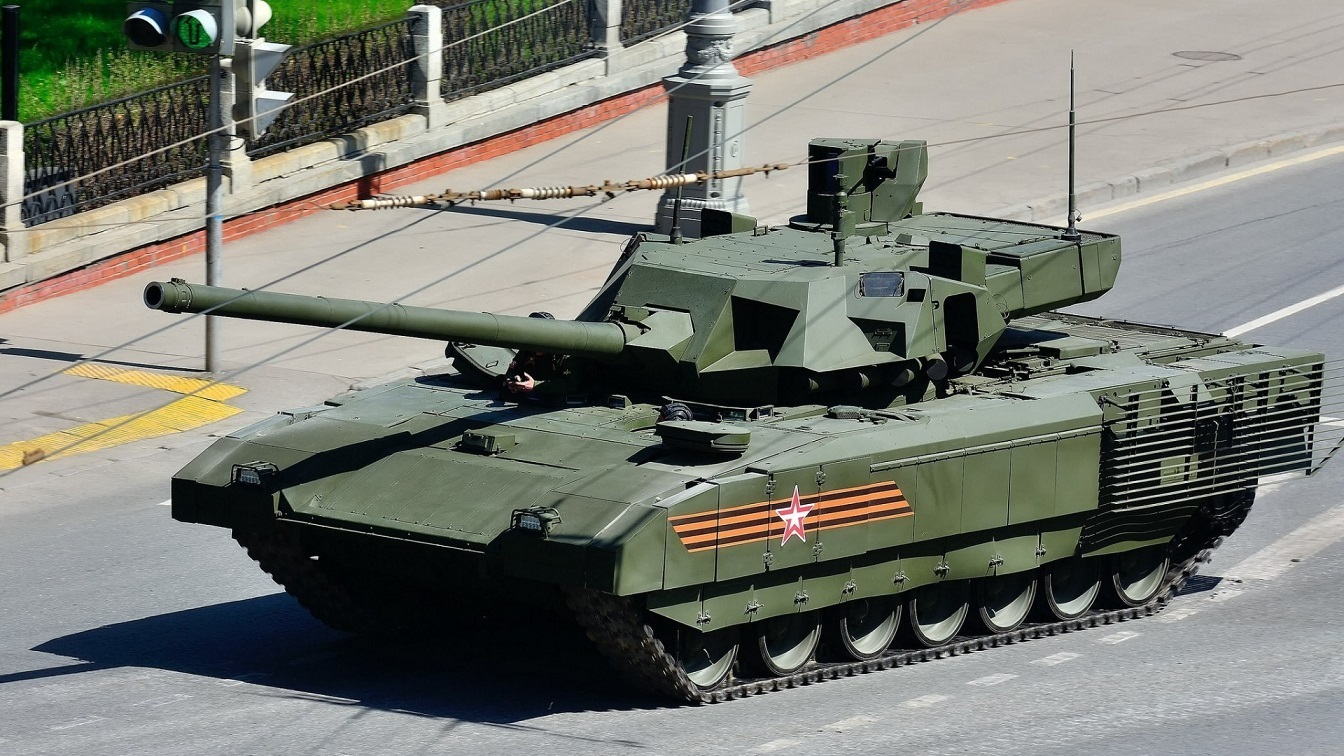Meet the T-14 Armata: Leading up to Moscow’s invasion of Ukraine, industry experts and military analysts largely suspected that Russian forces would be able to take the capital city of Kyiv in a matter of days. Technically, Russia’s military is bigger and more powerful than Ukraine’s. In February, Ukraine’s active personnel totaled just under 200,000 while Russian soldiers amounted to 900,000. Equipped with more armored vehicles, various airframes, and submarines, Russian Forces theoretically had the upper hand in its initial attack. Additionally, the Kremlin has allocated many more resources to its defense programs over the years. Despite these advantages, Moscow and its arsenal of weapons have taken major hits throughout the last six months of fighting. Specifically, Russia’s battle tanks have proven to be a huge failure in the Kremlin’s war efforts.
Moscow’s tanks have not performed well in Ukraine
During the onset of the invasion in late February, Russian forces primarily staged offensive bombardments against Ukrainian troops using battle tanks to carry out rocket, artillery, and missile strikes. However, this strategy was short-lived as Russia’s tanks struggled to survive in conflict.
By late July, the British Ministry of Defense confirmed that over 900 Russian tanks had been destroyed or captured. This number has probably only grown. While the Kremlin’s aging fleets of T-72 and T-80 main battle tanks (MBT) – which both have origins in a Soviet-era program – were not expected to be the backbone of Russia’s armored corps, these vehicles have played an outsized role in the invasion. The inclusion of these older models in the conflict has left many analysts wondering why Russia’s self-proclaimed top-of-the-line T-14 Armata MBT has not yet made an appearance in Ukraine.
What is the T-14 Armata?
The concept driving the T-14 “Armata” project began in 2010 when the Russian Military of Defense prioritized the development of an MBT that was technologically superior to the country’s outdated Soviet-era models. In 2015, the Chief Executive Officer of the T-14’s manufacturer Uralvagonzavod announced that the Kremlin expected to procure approximately 2,000 Armatas by 2020. Since this announcement, this number has shrunk immensely. Additionally, the T-14 has yet to be deployed. The design of the Aramata, however, does represent a massive departure from Moscow’s other MBTs.
The T-14 Armata reportedly hosts a series of enhancements that Russia claims make it uniquely survivable. The Armata carries a crew of three, positioned in the tank’s hull. Due to an array of cameras mounted all around the vehicle, the crew is able to monitor its surroundings while maintaining safety inside the armored shell. The Armata’s unmanned turret, which integrates a remotely controlled 125mm 2A82-1M smoothbore main gun with fully automated loading is perhaps the tank’s most innovative attribute. While the tank’s use of an unmanned turret is quite a unique feature, it is not any more formidable than near-peer MBTs.
As explained by Military Watch Magazine, “The T-14’s turret is not well armored, meaning it cannot take hits from even older APFSDS projectiles and can protect only against autocannon and lighter projectiles. The turret is nevertheless no less survivable than those of other tank designs, since the bulk of its size is represented by a screen that reduces its radar and thermal signatures and provides a degree of armored protection but does not contain any essential electronics or mechanisms. The part of the turret containing mechanisms is extremely small, and from the front represents under a third of the turret size little of which is visible other than directly behind the gun mantlet.”

Russian Armata Tank. Image Credit: Creative Commons.
The T-14 Armata also reportedly sports various other advancements, including advanced sensors, fire control systems, and communications.
Where is the T-14?
While the Kremlin has boasted that the T-14 brings unmatched capabilities to the battlefield, the tank has never materialized. Although Russian tank production has certainly been crippled by international sanctions, the Armata has suffered multiple delays and budgetary restraints since its inception. This month, the Kremlin sought to advertise the Armata for export. However, it seems unlikely that foreign entities would purchase very costly MBTs that have never been operationally deployed. The lack of Armata presence in the Ukraine invasion does not bode well for Russia.
Maya Carlin is a Middle East Defense Editor with 19FortyFive. She is also an analyst with the Center for Security Policy and a former Anna Sobol Levy Fellow at IDC Herzliya in Israel. She has by-lines in many publications, including The National Interest, Jerusalem Post, and Times of Israel.

